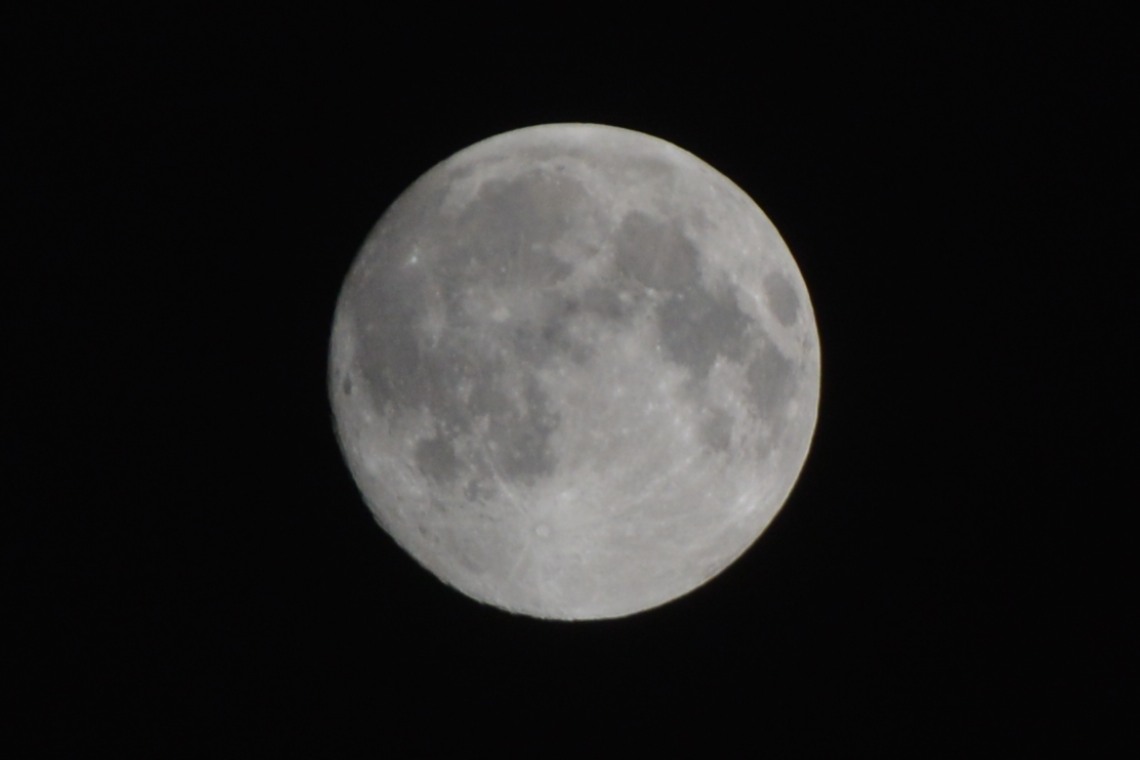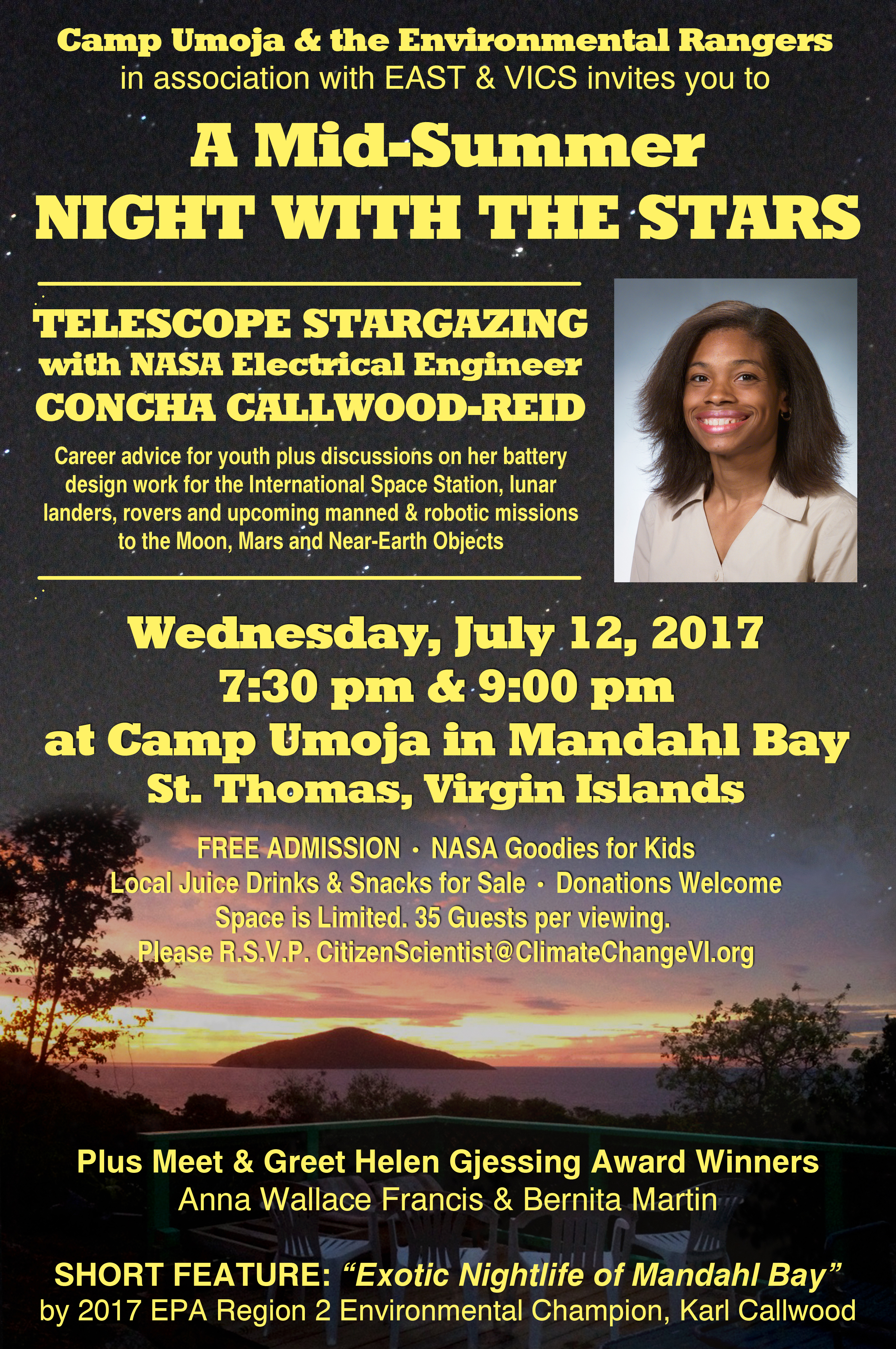Jupiter’s Red Spot, Saturn’s Rings, The Pillars of Creation and Thunder Moon to appear at Camp Umoja’s Free Stargazing Event
 On July 12th, Camp Umoja and the Environmental Rangers, in association with the Environmental Association of St. Thomas-St. John and V.I.C.S. will be hosting “A Mid-Summer Night with the Stars” free stargazing event at the Mandahl Bay Campgrounds.
On July 12th, Camp Umoja and the Environmental Rangers, in association with the Environmental Association of St. Thomas-St. John and V.I.C.S. will be hosting “A Mid-Summer Night with the Stars” free stargazing event at the Mandahl Bay Campgrounds. The guest speaker will be NASA Electrical Engineer Concha Callwood Reid, fresh from working on the International Space Station’s new battery design. She will be discussing her current work on the upcoming Aries and Orion missions, as well as manned and robotic flights to the moon, Mars and Near-Earth Objects. Career advice for kids will also be given.
The guest speaker will be NASA Electrical Engineer Concha Callwood Reid, fresh from working on the International Space Station’s new battery design. She will be discussing her current work on the upcoming Aries and Orion missions, as well as manned and robotic flights to the moon, Mars and Near-Earth Objects. Career advice for kids will also be given.Also in attendance will be representatives from the University of the Virgin Islands Physics Department and Etelman Observatory. Additionally, the St. Thomas East End Medical Center (STEEMCC) will provide important information for you and your health in a changing climate.
There are two viewing times: 7:30 p.m. and 9 p.m. Admission is free. Local drinks and snacks on sale. NASA and STEEMCC Giveaways! Space is limited, so please RSVP to the address on the poster below.
PLEASE NOTE: The 7:30 viewing is fully booked. A few slots remain open for the 9:00 stargazing.
Camp Umoja Stargazing Highlights for July 12th
~ By Richard Callwood III
The highlights of the night sky will be the planets Jupiter and Saturn. Jupiter’s Great Red Spot will be in view during the show times, and yes, you will be able to see the rings of Saturn!
Summer is when the central portion of the Milky Way rises. Some nebulae and large number of star clusters will be in view. The Pillars of Creation Nebula, made famous by the Hubble Space Telescope, will be visible, although of course you won’t get the same view that Hubble did.
Also in the sky will be the Ring Nebula and the Dumbbell Nebula. These two nebulae are previews of what our Sun will look like in 7 billion years.
 The waning gibbous (just past full) Moon will rise at 9:39 p.m., making it difficult to view nebulae, galaxies, and many of the star clusters. But the moonlight will not affect the viewing of Jupiter, Saturn, a colorful double star in the Northern Cross, and of course the Moon itself.
The waning gibbous (just past full) Moon will rise at 9:39 p.m., making it difficult to view nebulae, galaxies, and many of the star clusters. But the moonlight will not affect the viewing of Jupiter, Saturn, a colorful double star in the Northern Cross, and of course the Moon itself.In many parts of the world, the July full moon is referred to as the “Buck Moon” or “Thunder Moon”. The antlers of certain species of male deer annually mature during this moon, hence the nick name ‘buck’. July, typically being the stormiest month of the year, resulted in the term ‘Thunder Moon’
A Note on Solar Eclipse Safety
On August 21 of this year, there will be a total eclipse of the Sun, and some partial phases will be visible from the Virgin Islands. This is just a reminder that you should never look at the Sun without proper equipment unless the Sun is totally eclipsed. Sunglasses are not proper equipment! If you cannot obtain special viewing glasses or viewing equipment, #14 welder’s glass will be safe. If you have a telescope, make sure that you use a filter intended specifically for the Sun, and that it fits over the front of the telescope. Never use a solar filter that screws into the eyepiece. I will have more tips at a later date.


